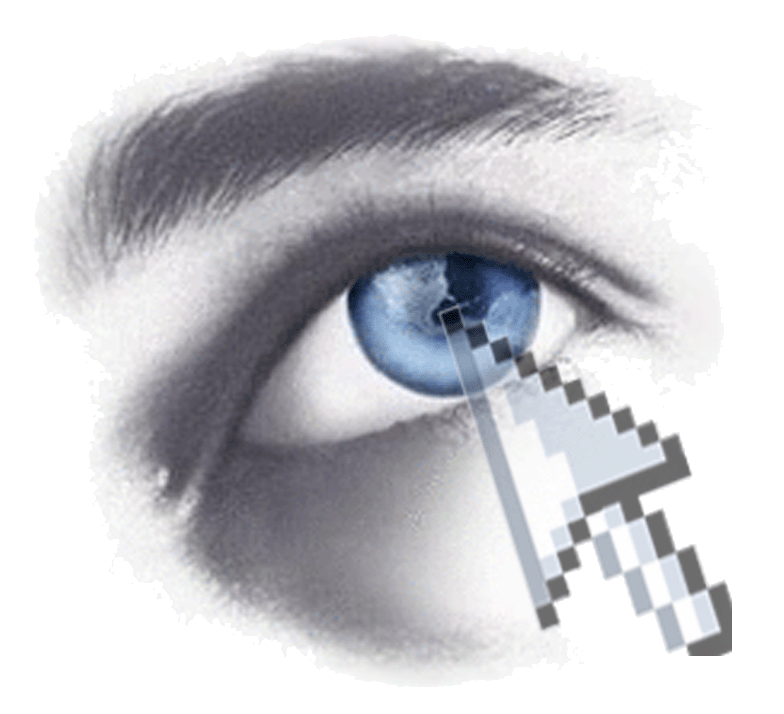application areas
For additional information, please see the papers in the publications section.Pointing and Selection
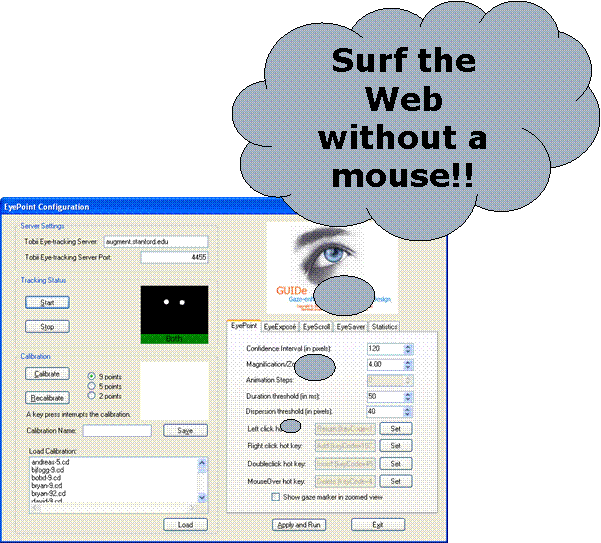
We have developed a patent-pending approach to using eye-gaze to perform pointing at selection tasks usually performed with a mouse. Our EyePoint™ software allows users to perform basic mouse operation by using a combination of gaze and hotkeys. It reduces / eliminates the dependency on the mouse for most everyday tasks such as surfing the web.
EyePoint™ uses a extremely simple and fluid look-press-look-release action in order to allow for increasingly accurate selection. A full preview of how EyePoint™ works can be seen in Using EyePoint™.
Application / task switching
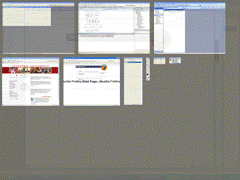
EyeExposé™ allows for gaze-based application switching combining the ease of use of Exposé-like application switching with gaze-based selection. A full preview of how EyeExposé™ works can be seein in Using EyeExposé™.
Scrolling
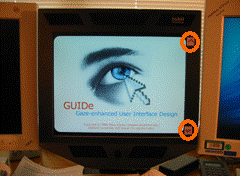
Our patent-pending gaze-enhanced scrolling techniques (EyeScroll™) allow for automatic, adaptive scrolling on content being viewed on the screen. EyeScroll supports multiple scrolling moded depending on the user's preference and reading style. In particular we present techniques that allow users to read the content as is scrolls smoothly or scrolls once the user has reached the bottom of the screen. The gaze-enhanced page-down/page-up feature ensures that the users eyes are always kept focused on what they were reading during scrolling events. For more details please see the paper in the publications section.
Security and Utilities
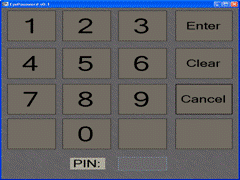
EyePassword™ allows gaze-based password/pin entry. It prevents shoulder surfing and does not generate any keyboard and mouse events making it more difficult to use standard event loggers.
EyeSaver™ turns on the screen saver when a user looks away from the screen and automatically turns off the screensaver when the user looks back at the screen.


